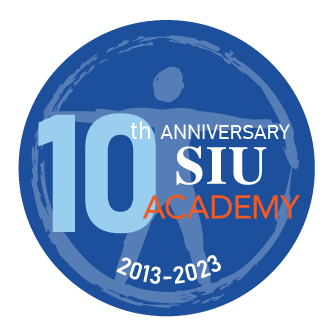A Global Perspective of Stenting after Ureteroscopy: an Observational Multicenter Cohort Study
Abstract
Objectives
With an increasing number of patients undergoing ureteroscopic surgery worldwide for stone disease, and the concomitant pressures on health care resources, we aimed to review global patterns for ureteric stenting following ureteroscopy. With a centralized electronic database, a longitudinal cohort study was designed to help define the indications for stenting, type of drainage, and methods of stent removal.
Methods
This multicenter study was conducted prospectively, with centralized data acquisition by uCARE (research arm of the Société Internationale d'Urologie), and registered at ClinicalTrials.gov (NCT03567421). Along with baseline demographic data, details were entered for stone imaging characteristics, intraoperative information, including urine culture, and exit strategy for stent removal. An independent audit was undertaken to sample the accuracy of data entered across the sites.
Results
In total, 2544 patients were included from 50 centers in 15 countries. There were 1969 patients with ureteric stones, and 942 with renal stones. While 41% ureteric stones were distal (median length 10mm), 52% renal stones were in the lower pole (median diameter 11 mm). The majority of patients (68.8%) were given antibiotics at induction; 20.6% were “pre-stented” before the ureteroscopy, and a high percentage were stented following ureteroscopy (91%). The majority of the stents (85.1%) were polyurethane, mean duration of stent after surgery was 27 days, and 80% of stent removals were undertaken in the operating room.
Conclusion
This is one of the largest prospective global cohort studies, reflecting widespread usage of stenting, despite emerging evidence to the contrary. Stent removals may also be modified with time, as the pressure on health care resources mounts.
The Société International d'Urologie (SIU), which owns and publishes the Société International d'Urologie Journal (SIUJ), does not require authors of papers published in the journal to transfer copyright. Instead, we ask authors to grant an exclusive licence that allows us to publish the article in SIUJ (and any derivative or related products or publications) and that allows us to sub-license such rights and exploit all subsidiary rights.
Authors retain the right to use their own articles for their own non-commercial purposes without seeking explicit permission from SIU.
The SIUJ publication licence expressly defines “non-commercial” as “not primarily intended for or directed towards commercial advantage or monetary compensation.” Although no activity is completely disconnected from commercial activity, the following are generally considered to be non-commercial uses:
- Reproduction of a reasonable number (no more than 100) of print copies of the published paper for personal use (e.g., sharing with colleagues, including in grant applications).
- Posting a copy of the published version of the paper on the author’s own or their institution’s website. The article must be accompanied by this statement: ‘This article has been published in the SIUJ: [full citation; link]’.
- Inclusion of the paper in a course pack, with a maximum of 100 copies to be used in the author’s institution. The copies must include the following acknowledgement: ‘This article has been published in the SIUJ: [full citation; link].’
As the distinction between commercial and non-commercial is not always clear, authors are strongly advised to seek permission from SIU for any use that may be considered to have a commercial aspect.
We ask the corresponding author to read the terms of the licence and then to grant this exclusive licence on behalf of all authors by indicating agreement to the following statement:
The corresponding author has the right to grant on behalf of all authors and does grant on behalf of all authors, an exclusive licence on a worldwide basis to the SIU and its licensees to permit this article (if accepted) to be published in the SIUJ and any other SIU products and publications and to exploit all subsidiary rights, as set out in our licence agreement.
Review and Decision
Most submissions will be reviewed by a senior editor within 2 weeks. Many manuscripts will be rejected at this point for a variety of reasons, including subject matter outside the scope of the SIUJ, flawed design, discredited or outdated methodology, poor organization or presentation, failure to conform to ethical requirements, and apparent plagiarism.The remaining manuscripts will be sent for peer review. The SIUJ uses a single-blind process: reviewers know the identity of the authors, but the authors are not told who has reviewed their manuscript, and SIUJ ensures that potentially identifying information is removed from comments sent to them. Reviewers are asked to make their recommendations within 10 days, after which a senior/specialist editor will consider their comments and recommend provisional acceptance dependent on satisfactory revision, acceptance without revision, or rejection. Authors should receive a final decision within 4 to 6 weeks of submission.











